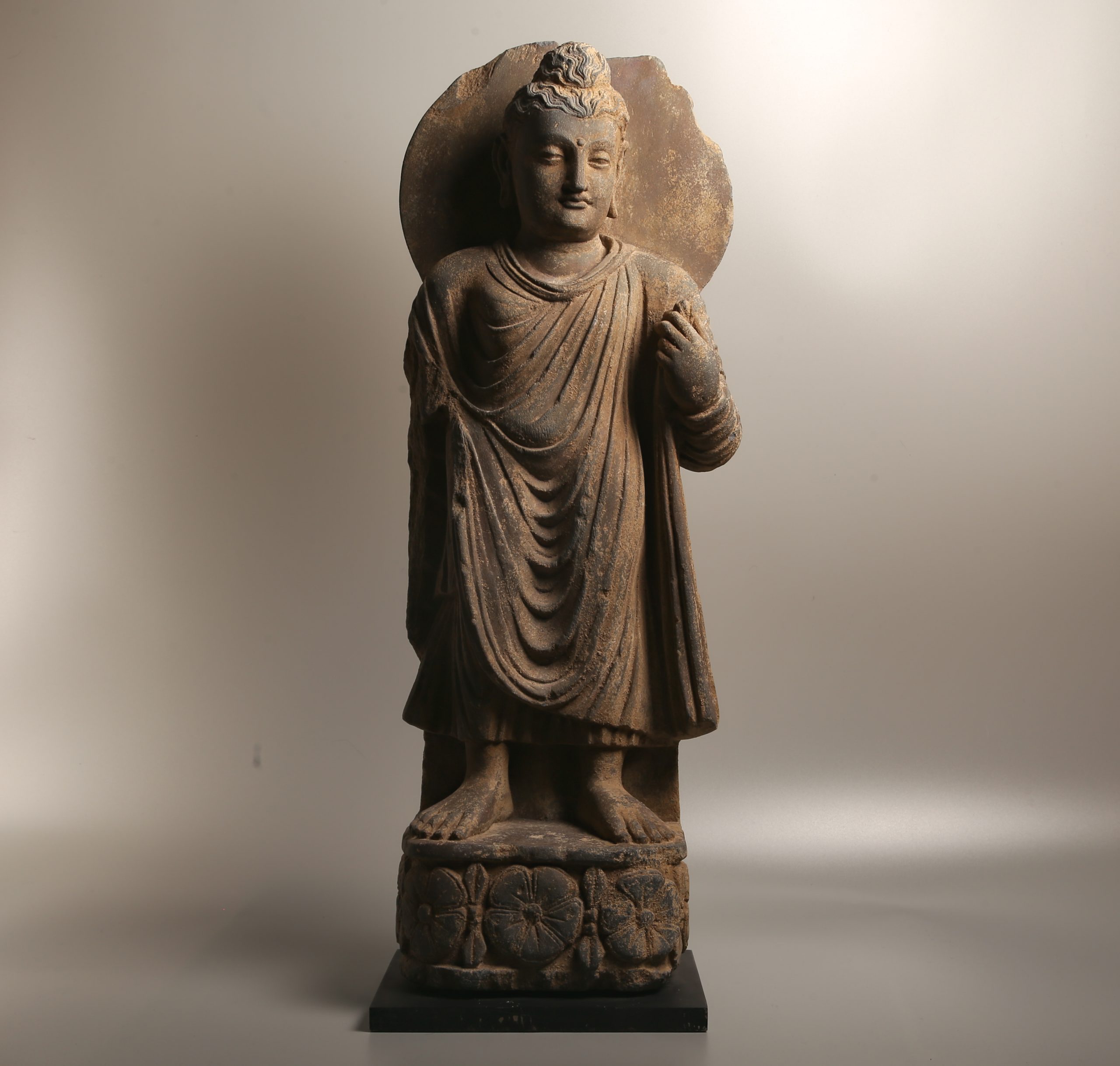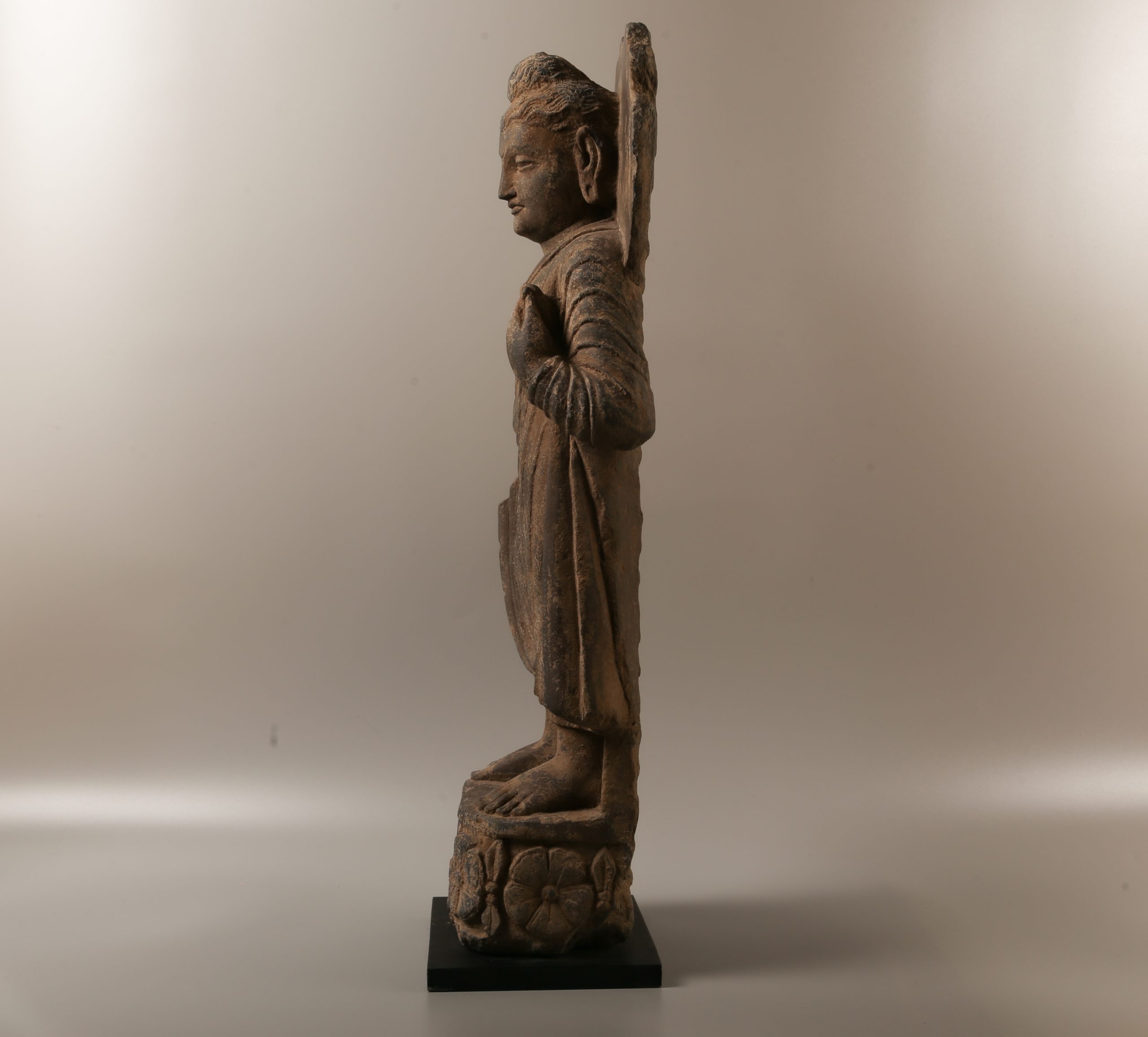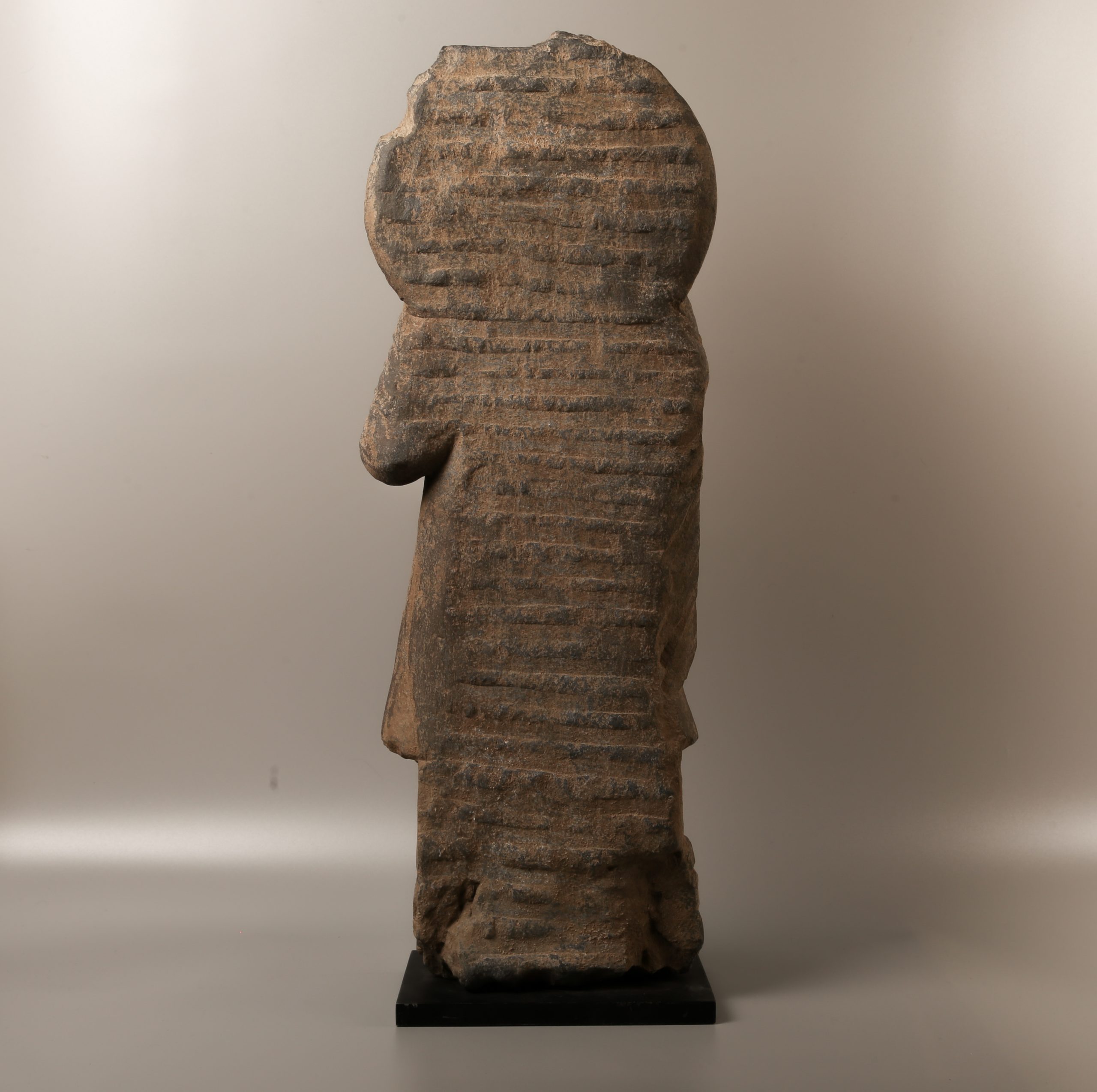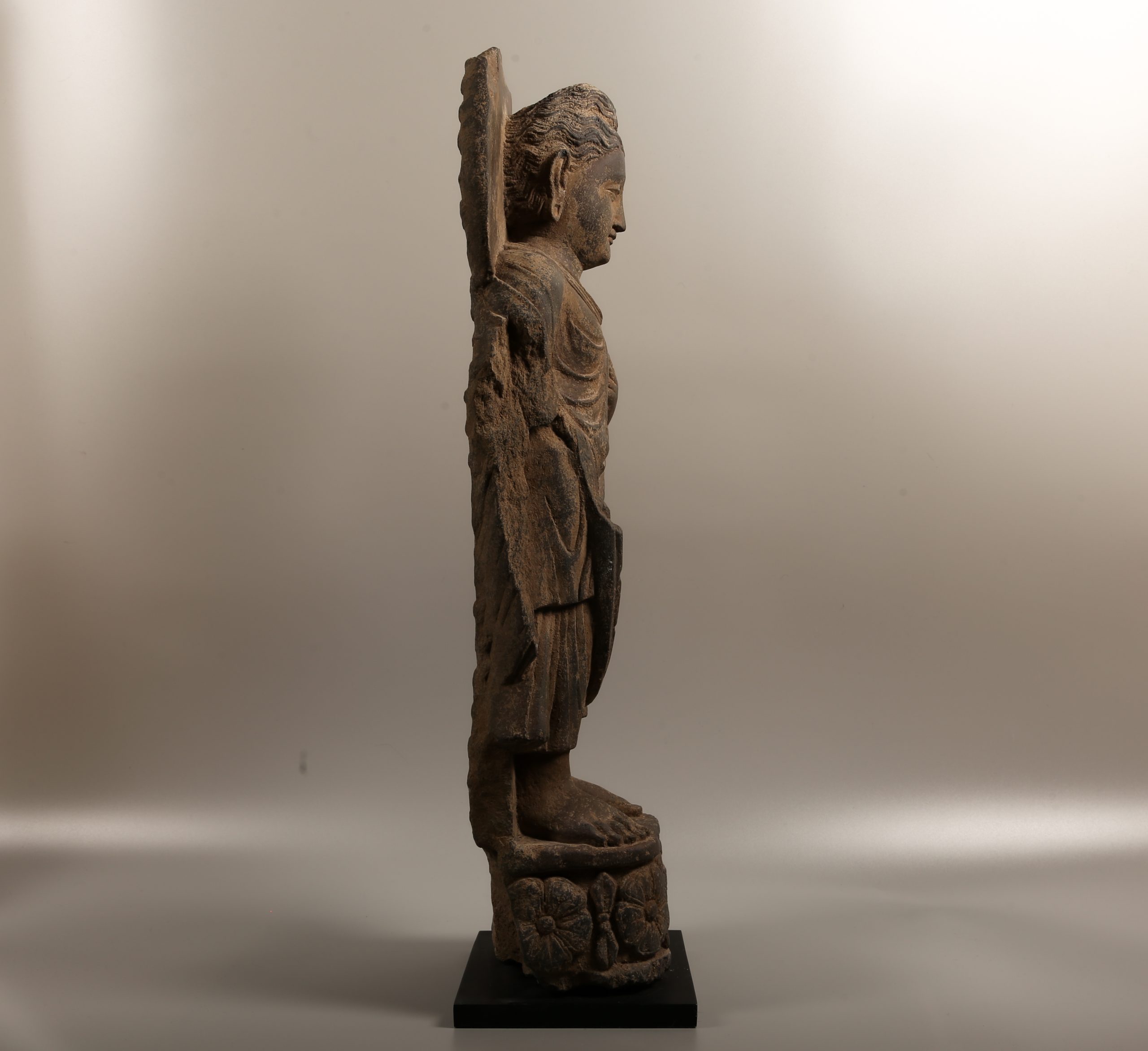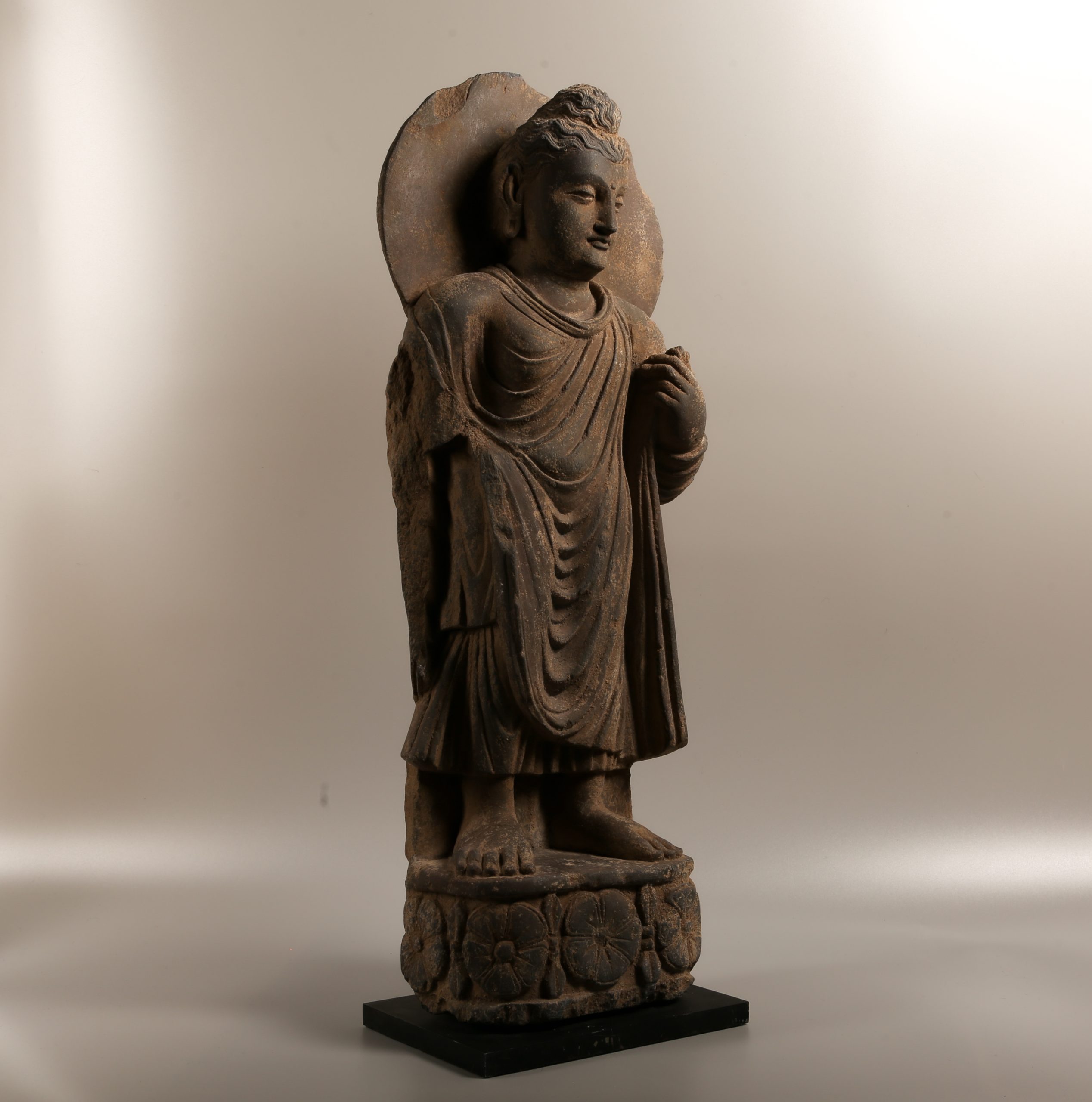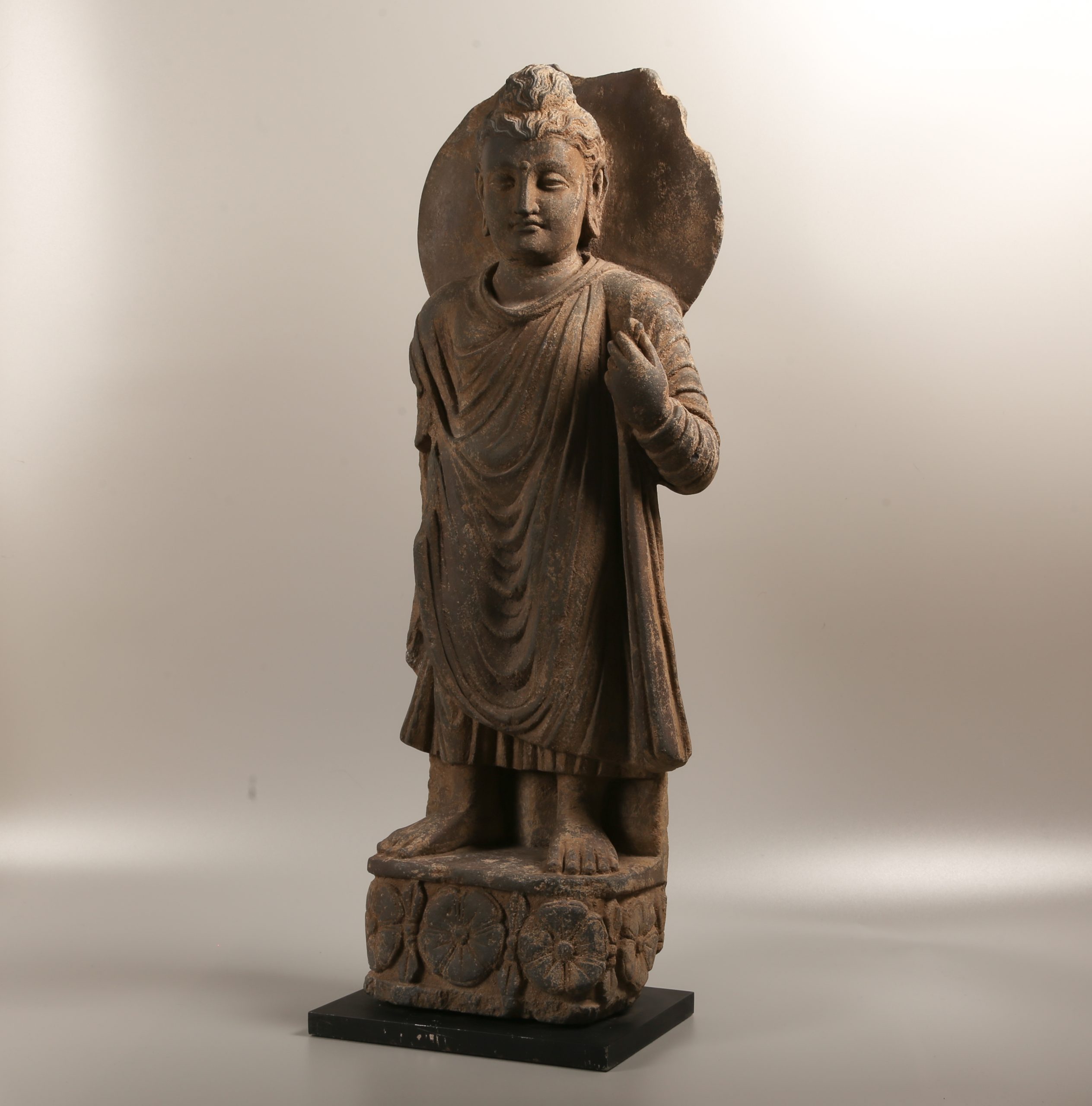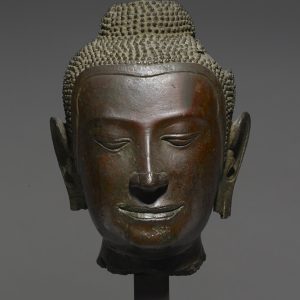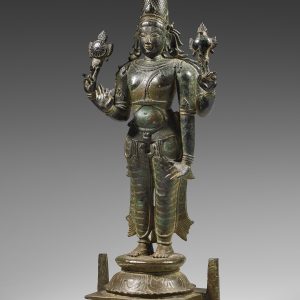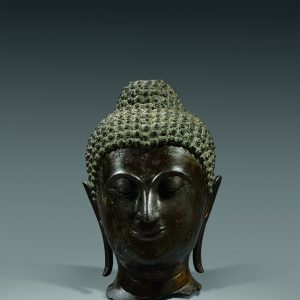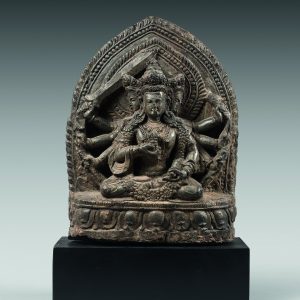Buddha Śākyamuni statue
Grey schist
Ancient Gandhāra region
2nd-3rd century
H: 66 cm or 26 in
360° View
Description
The Śākyamuni Buddha
This superb sculpture comes from the ancient region of Gandhara (Afghanistan, Pakistan), and represents the Buddha standing. The Blessed One can be recognized by his monastic costume covering both shoulders here, and the circular mandorla behind his head; but especially by the lakṣaṇa, distinctive marks or signs of the Śākyamuni Buddha, including the cranial protuberance (uṣṇīṣa), the tuft of hair between the eyes (ūrṇā), and his distended earlobes, revealing his former wealth. The right arm is fragmentary, but his hand would have been sketching the gesture of fearlessness (abhaya mudrā), palm facing outward and fingers extended. This iconography is conventional for depicting the historical Buddha and becomes fixed in the early centuries of our era, when the anthropomorphic representation of the Buddha appears.
An art at the crossroads of civilizations
This sculpture is characteristic of the art of the Gandhāra region, notably by the drapery with concentric folds, held in one hand by the Buddha, which shows a Hellenistic influence testifying to the exchanges and contacts of civilizations. This is what the historian Alfred Foucher has established as Greco-Buddhist art: a syncretic art born in Gandhāra, thanks to the encounter between the Greek, Persian and Indian worlds, notably through the caravan trade and the Silk Road. We thus find all the characteristic qualities of this region, combining the finesse of Hellenistic realism and the iconographic codes of the Buddhist religion.
A remarkable know-how
The round and full face, of great gentleness and serenity, the half-closed eyelids, the straight nose, the small fleshy mouth as well as the use of schist testify to an art perfectly mastered in its making, underlined by its excellent state of preservation. This remarkable sculpture probably took place in one of the two spaces of Gandhāra monasteries: a courtyard accessible to devotees and cluttered with all sorts of ex-voto monuments, such as reliquary mounds (stūpa) and chapels, and, beyond that, a space reserved for monks only. It is therefore a unique and powerful work, carrying a thousand-year-old history.
Provenance : This piece comes from a former Japanese collection, since 1980, then from an English private collection since 2003.

